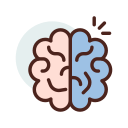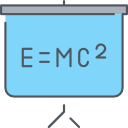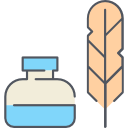Jurnal Internasional S3 MP
Improving Teacher Engagement Through Strengthening Creativity, Organizational Support, Adversity Intelligence, and Achievement Motivation in Permanent Foundation Teachers (Gty) of Private Junior High Schools in Karawang District
This study aims to produce optimal strategies, methods and solutions to improve Teacher Engagement through strengthening the variables of Creativity, Organizational Support and Adversity Intelligence as independent variables and the variable of Achievement Motivation as an intervening variable. The sample selected based on the Taro Yamane formula from a population of 463 resulted in 215 samples taken by proportional random sampling in 7 Districts in Karawang Regency. This study uses a survey method with a path analysis approach and is continued with SITOREM analysis.The results of this study can be concluded: 1) There is a significant positive direct effect between creativity (X1) on teacher engagement (Y) with βy1 = 0.278, so that strengthening creativity (X1) can increase teacher engagement (Y); There is a significant positive direct effect between organizational support (X2) on teacher engagement (Y) with βy2 = 0.307, so that strengthening organizational support (X2) can increase teacher engagement (Y); There is a significant positive direct effect between adversity intelligence (X3) on teacher engagement (Y) with βy3 = 0.134 so that strengthening adversity intelligence (X3) can increase teacher engagement (Y); There is a significant positive direct effect between achievement motivation (X4) on teacher engagement (Y) with βy4 = 0.267, so that strengthening achievement motivation (X4) can increase teacher engagement (Y); There is a significant positive direct effect between creativity (X1) on achievement motivation (X4) with βx1x4 = 0.232, so that strengthening creativity (X1) can increase achievement motivation (X4); There is a significant positive direct effect between organizational support (X2) on achievement motivation (X4) with βx2x4 = 0.276, so that strengthening organizational support (X2) can increase achievement motivation (X4); There is a significant positive direct effect between adversity intelligence (X3) on achievement motivation (X4) with βx3x4 = 0.238, so that strengthening adversity intelligence (X3) can increase achievement motivation (X4); There is a significant positive indirect effect betweencreativity (X1) on teacher engagement (Y) through achievement motivation (X4) with β14y = 0.074,so that strengthening creativity (X1) can increase teacher engagement (Y) through achievement motivation (X4). Achievement motivation (X4) cannot function effectively as an intervening variable between creativity (X1) and teacher engagement (Y) because the direct influence is greater than the indirect influence; There is a significant positive indirect influence between organizational support (X2) on teacher engagement (Y) through achievement motivation (X4) with β24y = 0.082, so that strengthening organizational support (X2) can increase teacher engagement (Y) through achievement motivation (X4). However, achievement motivation (X4) cannot function effectively as an intervening variable between organizational support (X2) and teacher engagement (Y) becausethe direct influence is greater than the indirect influence; and There is a significant positive indirect influence between adversity intelligence (X3) on teacher engagement (Y) through achievement motivation (X4) with β34y = 0.036, so that strengthening adversity intelligence (X3) can increase teacher engagement (Y) through achievement motivation (X4). However, achievement motivation (X4) cannot function effectively as an intervening variable between adversity intelligence (X3) and teacher engagement (Y) because the direct influence is greater than the indirect influence.The results of the SITOREM analysis show that the indicators that are still weak and need to be improved are: 1st providing justice, 2nd organizational rewards, 3rd acting smartly in seeking opportunities; 4th habits of behavior in solving problems; 5th behavior interested in complex things, 6th the drive to excel in competition, 7th the need for long-term career success, 8th strong drive to get feedback on performance, 9th attitude of controlling difficulties, 10th attitude facing difficulties, 11th work engagement, 12th career development, 13th work spirit, and 14th absorption. while the indicators that are maintained and developed are: 1) leadership support, 2) working conditions, 3) originality in developing something new or different, 4) open behavior in accepting new ideas and concepts; 5) acting persistently in trying; 6) the need to work intensively in carrying out tasks, 7) liking challenges and competition, 8) having a systematic and realizable work plan, 9) attitude towards the origin of difficulties, 10) attitude anticipating the impact of difficulties, 11) endurance towards difficulties, 12) dedication, 13) concern for productivity, and 14) sense of ownership
Ketersediaan
Tidak ada salinan data
Informasi Detail
- Judul Seri
-
-
- No. Panggil
-
-
- Penerbit
- International Journal of Busin : ., 2024
- Deskripsi Fisik
-
-
- Bahasa
-
English
- ISBN/ISSN
-
-
- Klasifikasi
-
NONE
- Tipe Isi
-
-
- Tipe Media
-
-
- Tipe Pembawa
-
-
- Edisi
-
-
- Subjek
-
-
- Info Detail Spesifik
-
-
- Pernyataan Tanggungjawab
-
-
Versi lain/terkait
Tidak tersedia versi lain
Lampiran Berkas
Komentar
Anda harus masuk sebelum memberikan komentar

 Karya Umum
Karya Umum  Filsafat
Filsafat  Agama
Agama  Ilmu-ilmu Sosial
Ilmu-ilmu Sosial  Bahasa
Bahasa  Ilmu-ilmu Murni
Ilmu-ilmu Murni  Ilmu-ilmu Terapan
Ilmu-ilmu Terapan  Kesenian, Hiburan, dan Olahraga
Kesenian, Hiburan, dan Olahraga  Kesusastraan
Kesusastraan  Geografi dan Sejarah
Geografi dan Sejarah